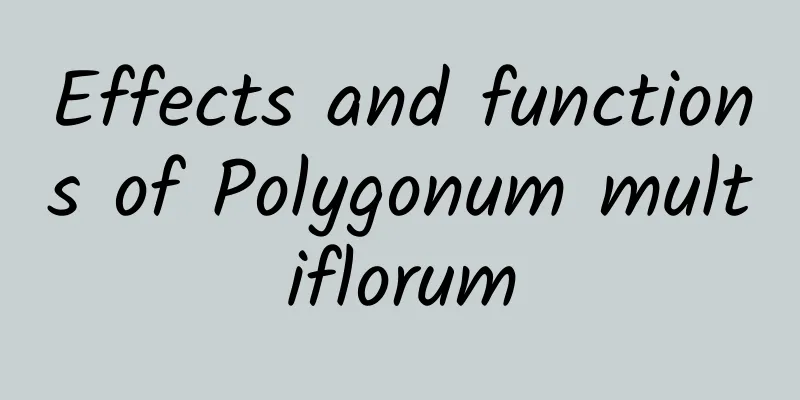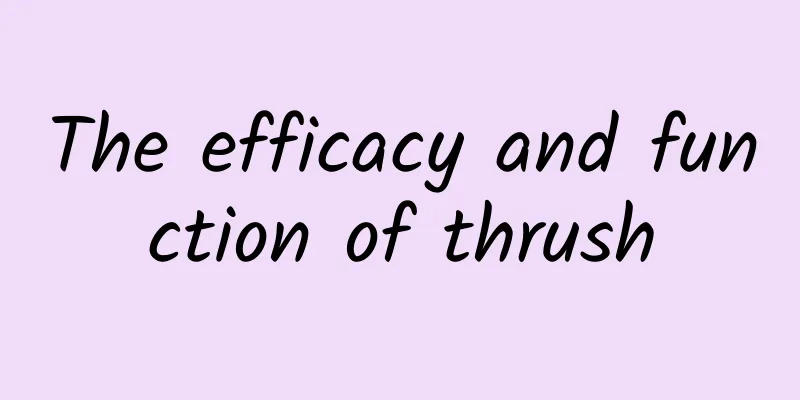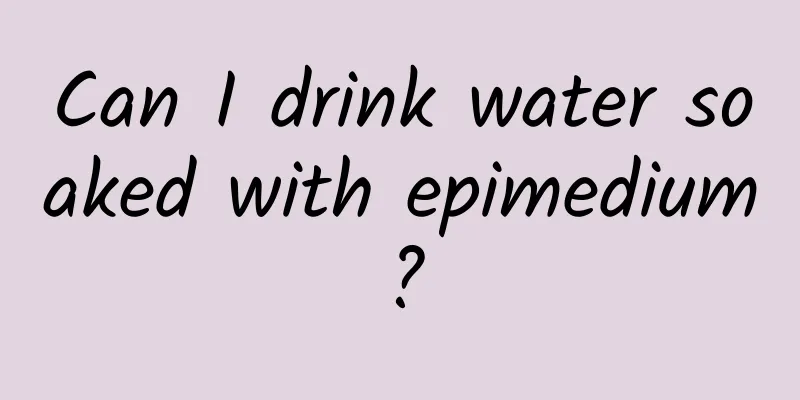Effects and functions of Polygonum multiflorum

|
Traditional Chinese medicine is very effective in treating some special diseases, but we still need to understand it before taking it. Today we will talk about some common knowledge about the medicinal material Polygonum multiflorum. [Other names] Polygonum aviculare, Polygonum rubrum [Source] Medicinal material source: The stems and leaves of Polygonum glutinosa of the Polygonaceae family. [Original form] Annual herb, 50-120cm tall. The stem is erect, branched at the top, densely covered with long, spreading hairs and stalked glandular hairs. Leaves are alternate; petiole 1-2cm long, stipule sheath tubular, membranous, 7-15mm long, densely hairy; leaf blade lanceolate or broadly lanceolate, 5-13cm long, 1.5-3.5cm wide, apex acuminate, base cuneate, sparsely or densely strigose on both sides, sometimes with sessile glandular hairs on the upper or both sides. Inflorescence spike-shaped, 3-5cm long; peduncle with long hairs and densely stalked glandular hairs; flowers red; perianth deeply lobed into 5 parts, each lobe about 3mm long; stamens 8; styles 3, stigma capitate. Achenes are broadly ovate, 3-ribbed, 2.5-3mm long, dark brown and shiny. The flowering period is July-August, and the fruiting period is September-October. [Habitat distribution] Ecological environment: Growing near water and roadside wetlands. [Properties] Identification of properties: The stems and branches are long cylindrical, or branched at the top, the surface is brown-green to black-green, densely covered with long hairs and glandular hairs, so it is rough and sticky, and the cross section is hollow. The leaves are curled and easily broken. When flattened, they are lanceolate or broadly lanceolate, 4-13cm long, 1-2.5cm wide, gradually pointed at the apex, cuneate at the base, brown-green to black-green, with short procumbent hairs on both sides and margins, and long hairs along the main veins; the stipules are tubular, truncated at the apex, with narrow wings at the base, and densely covered with long hairs. It has a fragrant aroma and a slightly astringent taste. 【Nature and flavor】 Spicy; neutral 【Functions and indications】 Regulating Qi and removing dampness; strengthening the stomach and promoting digestion. Mainly used for stomach pain, indigestion, infantile malnutrition, rheumatic pain [Usage and Dosage] For oral use: decocted in water, 6-15g. 【Excerpt】 Chinese Materia Medica The above content is an introduction to the Chinese medicine Polygonum aviculare. We should learn more about Polygonum aviculare in our daily lives so that we can use it more reasonably and better realize its value. |
<<: The efficacy and function of Leguan grass
>>: The efficacy and function of Viola
Recommend
The efficacy of wild black wolfberry
When it comes to the efficacy of wild black wolfb...
Why can’t I listen to music and chat at the same time? Is it because I’m stupid?
Audit expert: Yin Tielun Deputy Chief Physician, ...
Pictures of wolfsbane
Everyone knows that wolfsbane is a Chinese herbal...
European Central Bank: Eurozone Consumer Payments Report
The European Central Bank has released its “Euro ...
The efficacy and function of the iron gong
Tiepoluo is a medicinal material frequently used ...
Crystal, agate, glass, chalcedony...why are there such big differences?
We are all one family, all SiO2, why are we so di...
The efficacy and function of cattle hoof nail
Traditional Chinese medicine is a Chinese traditi...
Can you tell if your blood vessels are blocked by running? Cardiovascular doctors debunk rumors: It's not that simple
Once the blood vessels are blocked, our organ tis...
What are the medicinal values of blue sheep?
The blue sheep is a relatively rare wild animal, ...
The efficacy and function of otter fur
Otter fur is a very common traditional Chinese me...
The 2023 Nobel Prize in Physics has been announced! Learn about the history of attosecond pulses
The 2023 Nobel Prize in Physics was awarded to th...
The "stumbling" robot dog died in just one hour...
To avoid predators, animals such as newborn giraf...
StrongView: 54% of marketers plan to increase advertising budgets in 2015
199IT original compilation The "2015 Marketi...
Wild lily Chinese medicine
Everyone knows that lilies represent noble qualit...
Fun Questions | What is the uneven structure above the mouth?
What is the uneven structure above the mouth? Pal...









